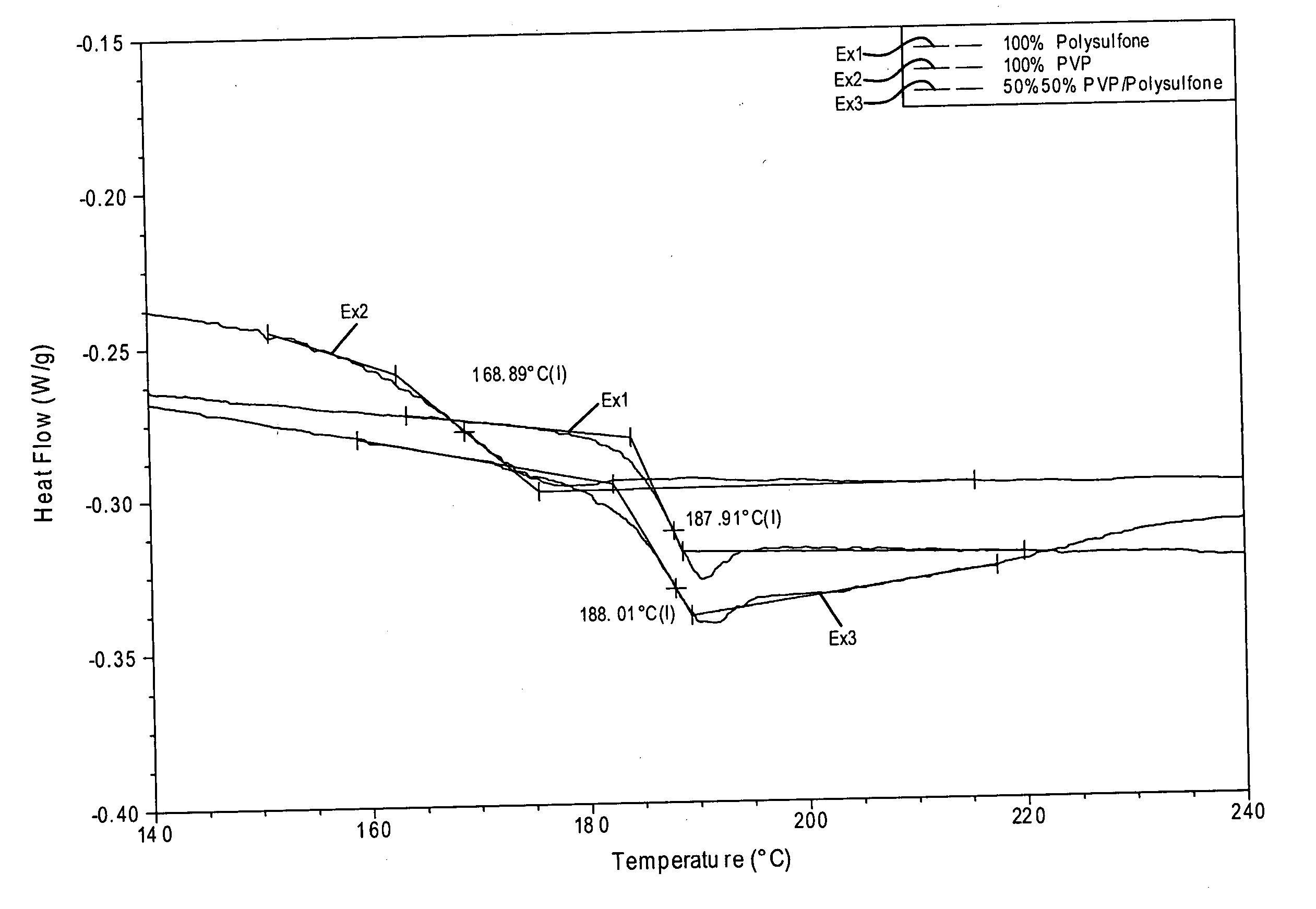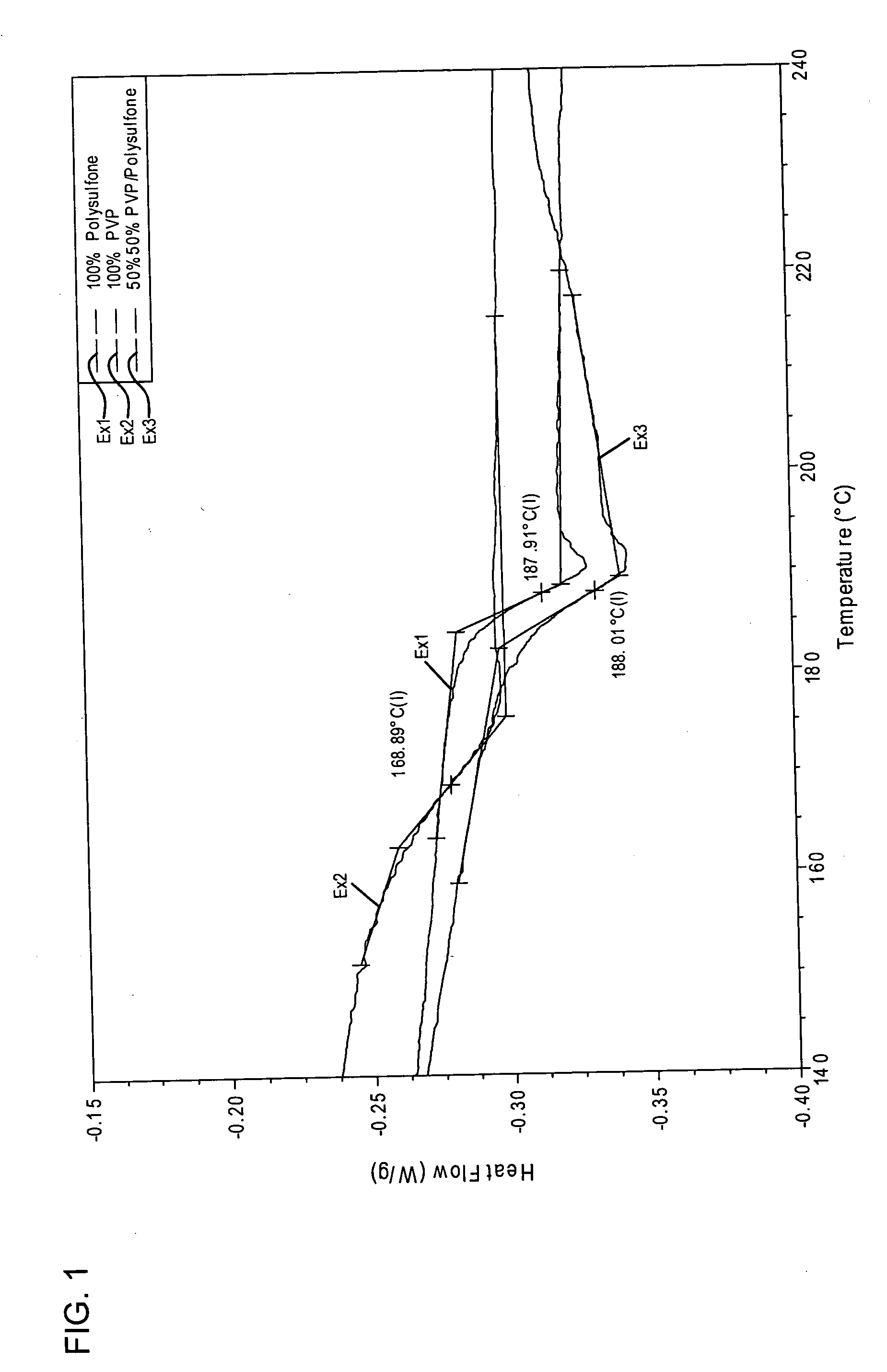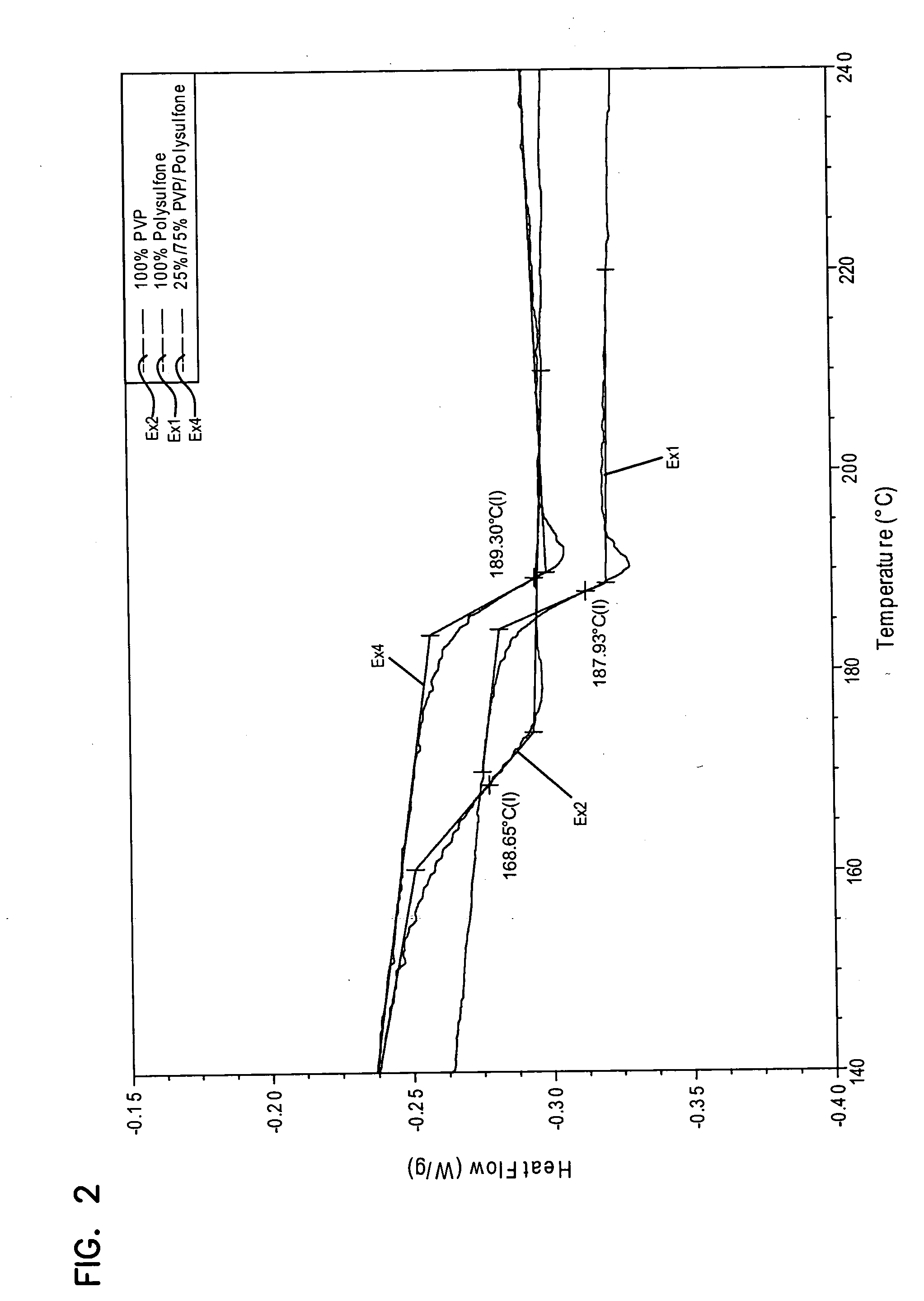Polysulfone and poly(N-vinyl lactam) polymer alloy and fiber and filter materials made of the alloy
a polymer alloy and polymer alloy technology, applied in the field of polymer alloy materials, can solve the problems of difficult and rare alloying of polymers to obtain a single glass transition temperature (tg) material with a homogeneous mixture on a molecular level, and achieve the effect of high initial and overall efficiency of particulate removal and substantial surface loading of trapped particles
- Summary
- Abstract
- Description
- Claims
- Application Information
AI Technical Summary
Benefits of technology
Problems solved by technology
Method used
Image
Examples
example 1
[0074] A polymer solution was obtained by combining polymer and solvent in a 500 ml glass kettle with 3-neck lid, to which mechanical stirring, a temperature probe, and a condenser were attached. The vessel placed in a heating mantle and the temperature controlled at 60° C. under with constant agitation until a uniform solution was obtained. The solution was cooled at room temperature before electrospinning.
[0075] Solution composition: 20% solids, with a composition of 100% polysulfone, UDEL 1700 (from Solvey), polymer by weight and a solvent composition of 50% THF and 50% DMF by weight.
[0076] Electrospinning conditions: Solution electrospun onto aluminum substrate via a syringe, which flow is controlled through a syringe pump at 0.1 ml / min. The distance between the tip (needle) of the syringe and the aluminum substrate at 6 inches. Applied voltage of 25 Kvolts.
example 2
[0077] A polymer solution was obtained as in Example 1 by combining polymer and solvent in a container with constant agitation until a uniform solution was obtained.
[0078] Solution composition: 30% solids, with a composition of 100% PVP, Luvitec K30 (from BASF), by weight and a solvent composition of 34% THF and 66% DMF by weight.
[0079] Electrospinning conditions: Solution electrospun onto aluminum substrate via a syringe, which flow is controlled through a syringe pump at 0.1 ml / min. The distance between the tip (needle) of the syringe and the aluminum substrate at 6 inches. Applied voltage of 17 Kvolts.
example 3
[0080] A polymer solution was obtained as in Example 1 by combining the polymers and solvent in a container with constant agitation until a uniform solution was obtained.
[0081] Solution composition: 20% solids, with a composition of polysulfone 50%, UDEL 1700 (from Solvey), and 50% PVP, Luvitec K30 (from BASF), by weight, in solutions of a solvent composition of 50% THF and 50% DMF by weight.
[0082] Electrospinning conditions: Solution electrospun onto aluminum substrate via a syringe, which flow is controlled through a syringe pump at 0.1 ml / min. The distance between the tip (needle) of the syringe and the aluminum substrate at 6 inches. Applied voltage of 17 Kvolts. FIGS. 4 and 5 are SEM photo micrographs of the fiber of Example 3.
Differential Scanning Calorimetry Analysis
[0083] The samples were analyzed using a TA Instruments Differential Scanning Calorimeter. (DSC). The samples were weighed and crimped in an aluminum pan and run for 3 cycles (second cycle shown) from 30° C. e...
PUM
| Property | Measurement | Unit |
|---|---|---|
| Temperature | aaaaa | aaaaa |
| Length | aaaaa | aaaaa |
| Thickness | aaaaa | aaaaa |
Abstract
Description
Claims
Application Information
 Login to View More
Login to View More - R&D
- Intellectual Property
- Life Sciences
- Materials
- Tech Scout
- Unparalleled Data Quality
- Higher Quality Content
- 60% Fewer Hallucinations
Browse by: Latest US Patents, China's latest patents, Technical Efficacy Thesaurus, Application Domain, Technology Topic, Popular Technical Reports.
© 2025 PatSnap. All rights reserved.Legal|Privacy policy|Modern Slavery Act Transparency Statement|Sitemap|About US| Contact US: help@patsnap.com



